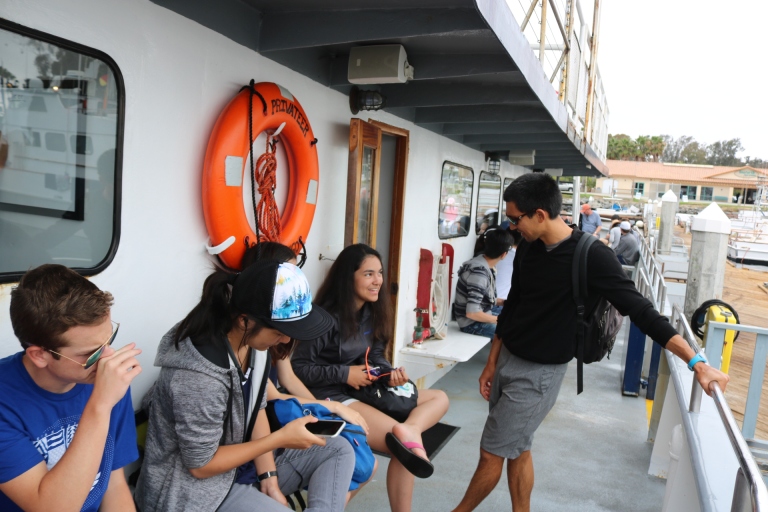At sea observations of whales, dolphins, and sea lions
By Ishaq Muhammad
On our thirteenth day of Oceans we set out to observe marine animals in their natural habitat; the Pacific Ocean. All of us headed over to San Diego Whale Watch in Mission Bay and boarded the Privateer for a three hour whale watch, hoping to learn about the animals that live right off our coast and hopefully spot some.
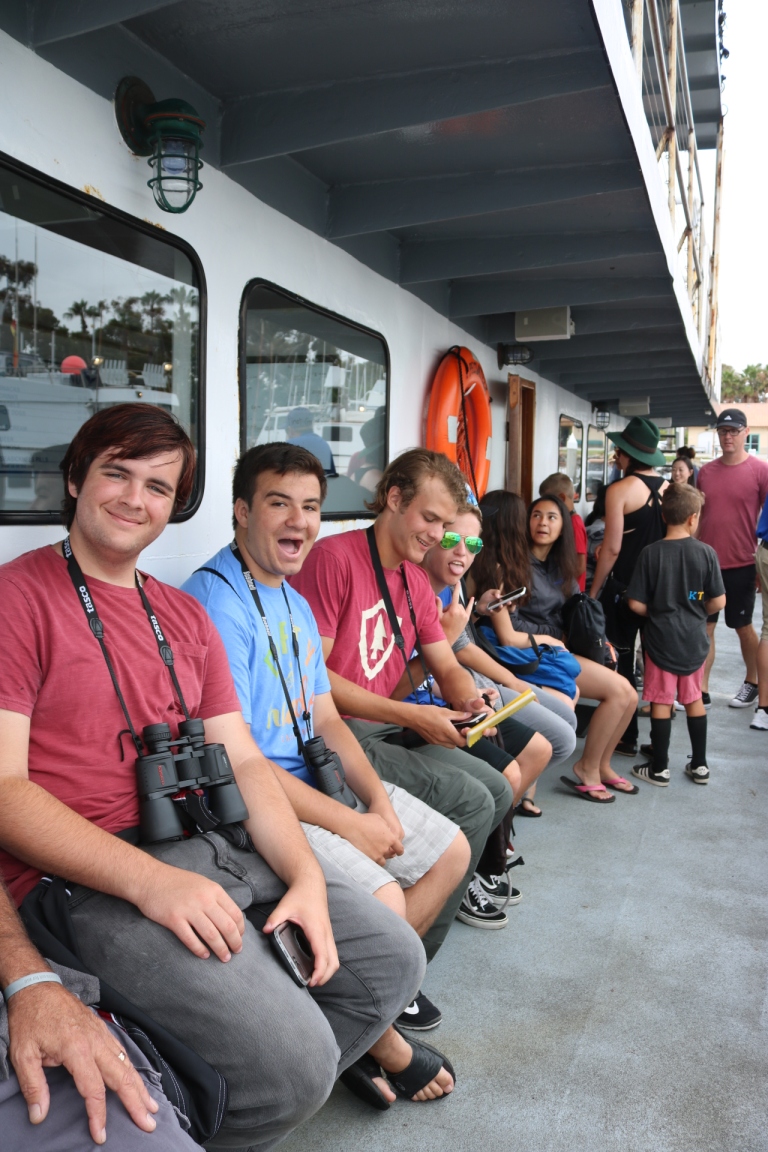
Once we departed we were already seeing just how special the Mission Bay area is. Different species of bird such as cormorants, pelicans and herons were circling about, a group of sea lions were lazing about on floats, and a trio of bottlenose dolphins surprised us as we hadn’t made it out to sea. We learned that inshore dolphins are actually genetically unique to the offshore dolphins.
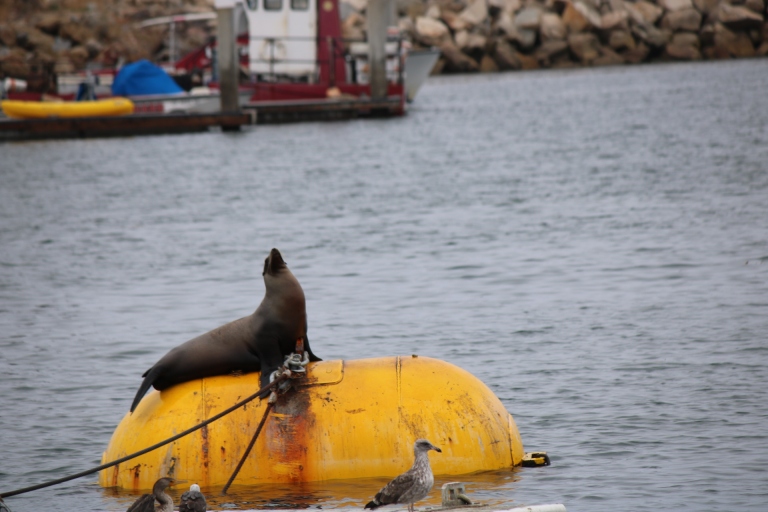
After leaving the Bay we got a firsthand view of the California coastline, and even Northern Mexico. The weather conditions were phenomenal with smooth waters and great visibility. As we cruised out further to sea, all of us were scanning the waves searching for signs of life in the vast expanse.
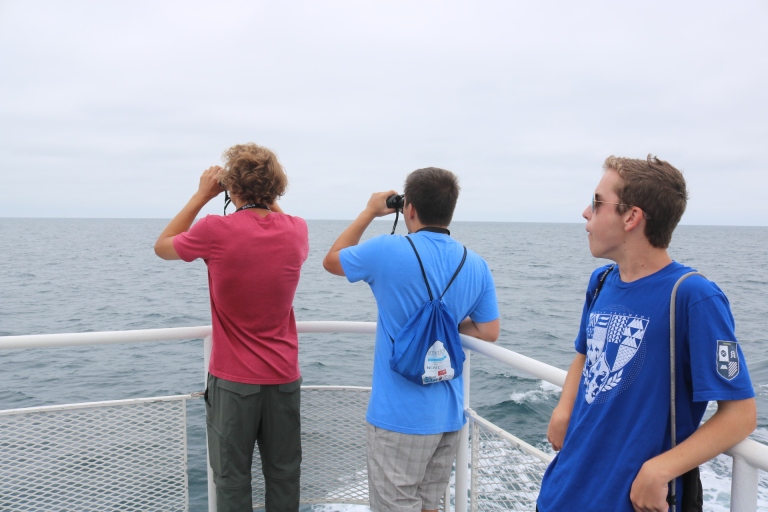
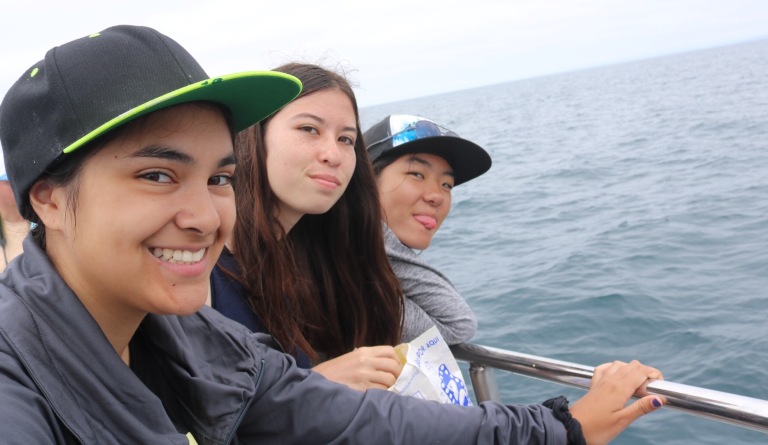
A sighting of a breaching Mako shark quickly sparked excitement onboard. Mako sharks are some of the fastest fish in the sea and have been known to leap up to 30 feet in the air. Our next wildlife encounter were a flock of various sea birds, many of which were diving into the water into a bait ball. We learned that pelicans can store up to three gallons in their pouches, cormorants can dive 150 feet below water, and that some birds gorge themselves on so much food that they can’t fly.
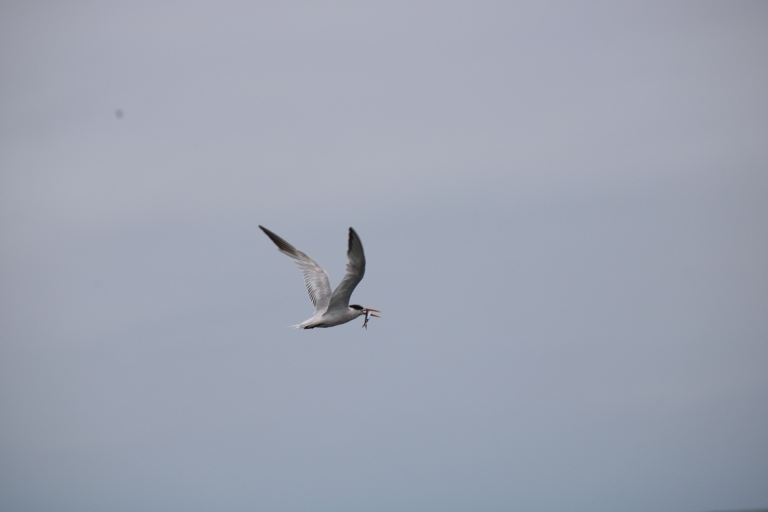
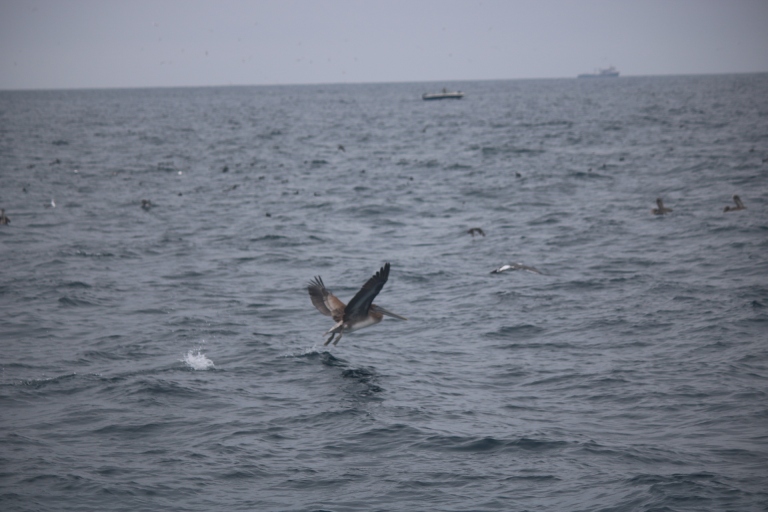
As we turned out ship around and headed back to the mainland, many of us were disappointed in not seeing any whales or dolphins at open sea. However we thought to soon as Alex and I spotted a pod of common dolphins headed straight for our ship. A pod of about twenty dolphins circled around our boat, probably just as curious as we were. Common dolphins are among the most widespread of all dolphin species, however different pods have their own unique dialect and special whistles for individuals within the pod. A dolphin from the Pacific Ocean would have a hard time understanding another from the Indian Ocean.
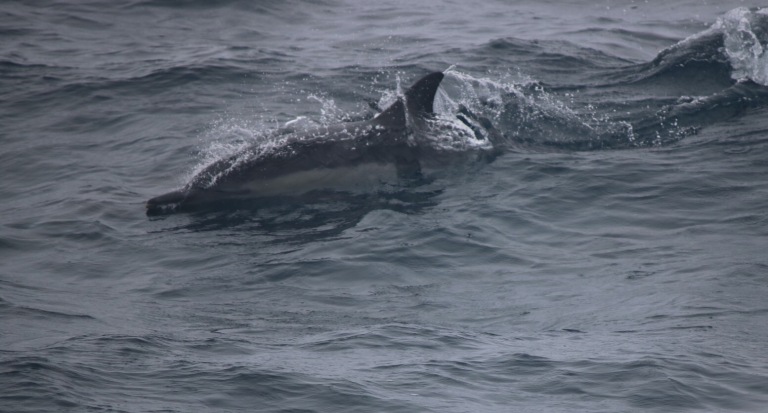
Once we arrive back, some of us pick up coupons for the next time we want to go on a whale watch. We concluded the day’s events with stand up where we shared our biggest takeaways from the day. They included admiration for the anatomy of marine bird, language of the common dolphin, and just how large and mysterious the ocean truly is.
